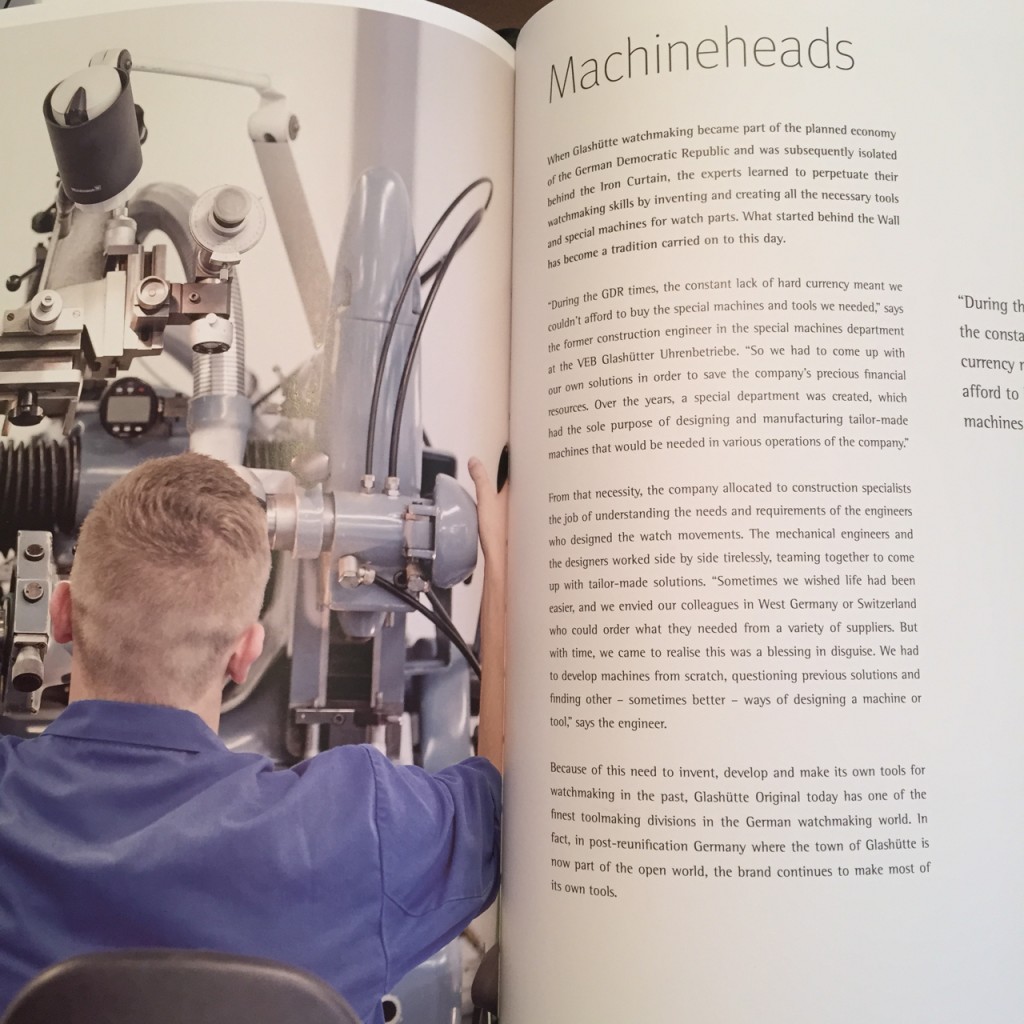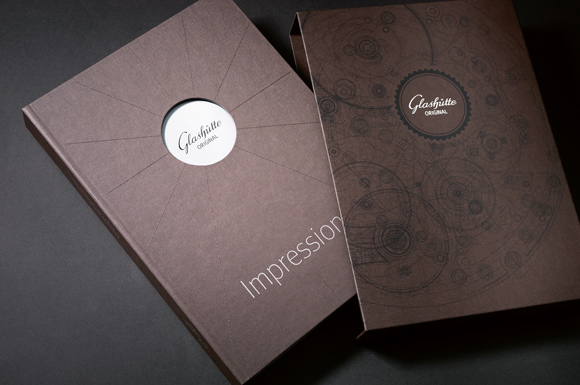Not long ago, I participated in the writing of a book paying tribute to the history of Glashutte Original and to the people who made it successful. Here, I bring you you a look at that writing process that ultimately contributed to the brand’s first Manufacture book.
As a veteran journalist in the watch industry for more than three decades, I’ve done my fair share of writing – not only contributing to some of the finest online sites (including WorldTempus) and print publications in the world, but also writing six books on watches and time.

Roberta Naas covered the chapter entitled Machine Heads, that explains how the brand created the machines to enable it to move forward in watchmaking
Still, when my colleague Anders Modig called me about a year ago and asked if I would be interested in participating in the writing of a book for Glashütte Original that he was overseeing, I was flattered. I mean, being asked to contribute – along with a dozen or so colleagues from around the world – was a compliment. It seems I had been asked to participate by the brand – a brand that I very much admire.
We discussed topics and I immediately learned that I was at a distinct disadvantage – many of the stories required me to interview watchmakers, toolmakers and others within the brand. My disability: I speak only English. Many of these artisans – located in the famed Glashütte region – speak only German. I was in a quandary. However, as any good journalist does, I investigated further and we found that via a series of translations we could make it work.
The book, which is being sold in Glashütte Original boutiques, is entitled “Impressions” and is the brand’s first Manufactory book. Interestingly enough, and much like Glashütte Original itself, the book is not really a classically organized brand book. Instead of a chronological review of the brand, it includes entries that range from journalistic articles to personal stories, historic insights and more – all in the hopes of presenting a more personal look at the brand.
The idea behind Impressions is to pay tribute to the history of the brand and to the cultures and people who made it successful. “Impressions is not only a portrait of our manufactory, but a tribute to the rich history of the region and the outstanding skills of the people who work and live here,” said Yann Gamard, CEO of Glashütte Original. Among the topics in the book are the original cottage industry, the economic and political climates that impacted the brand, and a look at the brand’s self-taught technical watchmaking know-how. In fact, one of the topics I was presented with, and was published in the book, was a close up look at how the brand preserved its traditional skills and knowledge, and how, during the GDR era, without access to the technical advances of the Western World, the brand learned to invent and create all of its tooling to perpetuate the watch making industry.
Although I thought I knew the brand and was familiar with its growth, researching and writing this article only gave me greater insight for and appreciation of what GDR meant to the region and how impressive it is to see the brand stretch its proverbial wings and fly. It should be noted that the authors of the 12 chapters of this book are from nearly a dozen countries, and many are collectors and brand followers as well as journalists. (This article by Roberta Naas first appeared on WorldTempus.com.)








